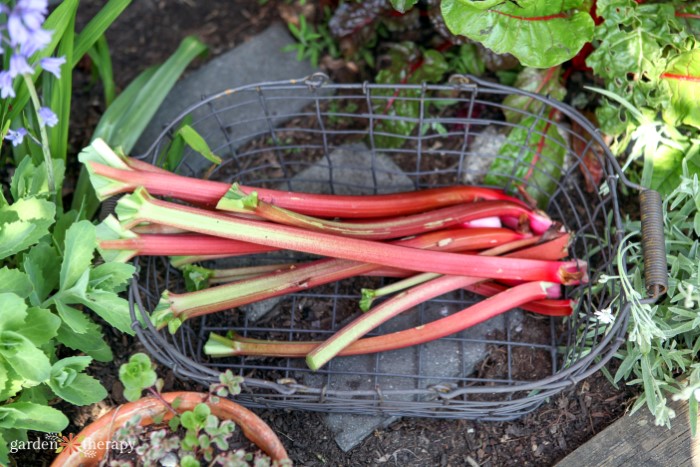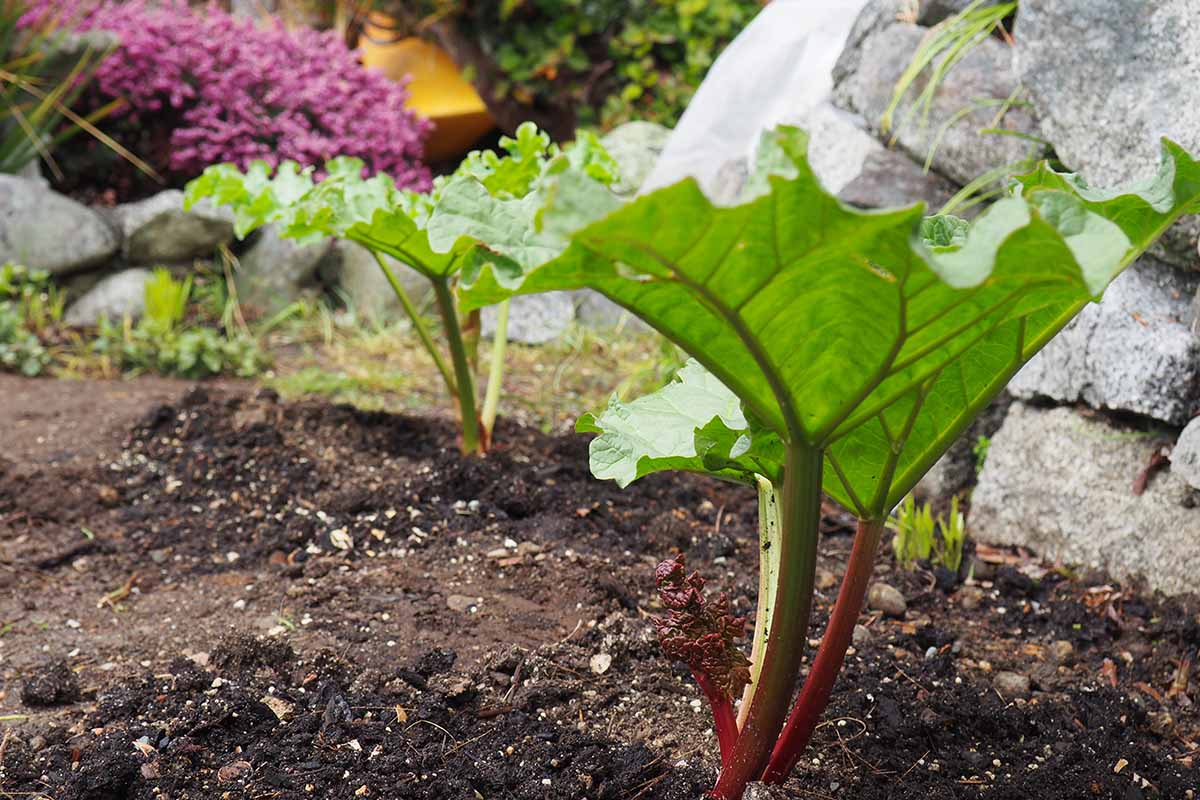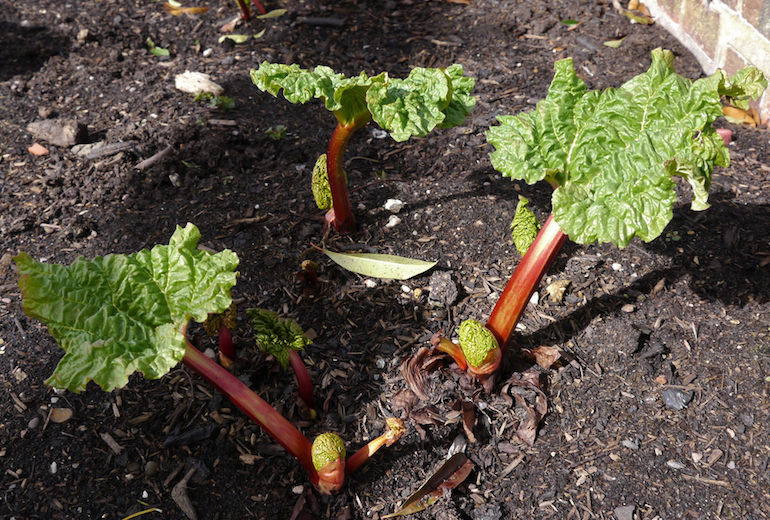Spring Awakening: Preparing Your Rhubarb for the New Season
As the last wisps of winter’s chill dissipate, it’s time to welcome spring and tend to your rhubarb patch. Caring for rhubarb in spring is crucial to ensure a bountiful harvest and promote healthy growth. Begin by inspecting your rhubarb patch for signs of damage, disease, and pests. Winter’s harsh conditions can leave your rhubarb stalks weakened, making them more susceptible to disease and pests.
Remove any dead or damaged stalks, as these can harbor diseases and pests that can spread to healthy plants. Cut the stalks at the base, making sure to remove any remaining dead or diseased tissue. This will help prevent the spread of disease and encourage new growth. Next, prepare the soil for new growth by loosening it to a depth of about 12 inches. This will help to aerate the soil, improve drainage, and promote healthy root development.
While inspecting your rhubarb patch, take note of any signs of crown rot, a common issue in rhubarb plants. Crown rot is caused by a fungal infection that can spread quickly, so it’s essential to address it promptly. Remove any affected plants, and treat the remaining plants with a fungicide to prevent further infection.
With your rhubarb patch inspected and prepared, you can begin to think about the upcoming growing season. Caring for rhubarb in spring requires attention to detail, but with the right techniques, you can enjoy a thriving and productive rhubarb patch. By removing dead and damaged stalks, preparing the soil, and addressing any signs of disease or pests, you’ll be well on your way to a successful growing season.
In addition to these essential spring care tasks, consider adding a layer of organic mulch to your rhubarb patch. Mulch helps to retain moisture, suppress weeds, and regulate soil temperature, creating an ideal environment for your rhubarb plants to thrive. As you continue to care for your rhubarb patch, keep in mind the importance of providing adequate light, water, and nutrients to support healthy growth.
By following these simple yet effective steps, you’ll be able to give your rhubarb patch the best possible start to the growing season. With proper care and attention, your rhubarb plants will reward you with a bountiful harvest of delicious and nutritious stalks. Whether you’re a seasoned gardener or just starting out, caring for rhubarb in spring is a great way to get outside and enjoy the beauty of nature.
How to Revitalize Your Rhubarb: Essential Spring Care Tasks
As the weather warms up in spring, it’s essential to provide your rhubarb patch with the necessary care to promote healthy growth and maximize yields. Caring for rhubarb in spring involves a series of tasks that will help to revitalize your plants and prepare them for the growing season ahead.
Fertilizing is a critical component of spring rhubarb care. Rhubarb plants require a balanced fertilizer that is high in phosphorus to promote root growth and development. Look for a fertilizer with a ratio of 10-10-10 (nitrogen-phosphorus-potassium) and apply it according to the manufacturer’s instructions. It’s also a good idea to add a layer of compost or well-rotted manure to the soil to provide additional nutrients and improve soil structure.
Watering is also crucial in spring, as rhubarb plants require consistent moisture to support healthy growth. Aim to provide about 1 inch of water per week, either through rainfall or irrigation. Mulching is another essential task in spring, as it helps to retain moisture, suppress weeds, and regulate soil temperature. Use a layer of organic mulch such as straw or wood chips to cover the soil around your rhubarb plants.
When selecting a fertilizer and mulch for your rhubarb patch, consider using organic options that are environmentally friendly and promote sustainable gardening practices. Organic fertilizers such as fish emulsion or bone meal are excellent choices, as they release nutrients slowly and promote healthy soil biota. Similarly, organic mulches such as straw or wood chips are better for the environment than synthetic options like plastic or rubber.
In addition to fertilizing, watering, and mulching, it’s also essential to monitor your rhubarb patch for signs of pests and diseases. Keep an eye out for common issues like crown rot, leaf spot, and aphids, and take action promptly if you notice any problems. By providing your rhubarb patch with the right care and attention in spring, you’ll be able to enjoy a bountiful harvest of delicious and nutritious stalks.
By following these essential spring care tasks, you’ll be able to revitalize your rhubarb patch and set it up for success in the growing season ahead. Remember to always use environmentally friendly and sustainable gardening practices to promote healthy soil biota and minimize your impact on the environment.
Divide and Conquer: Spring Rhubarb Division and Transplanting
As your rhubarb patch grows and matures, it’s essential to divide and transplant the plants to maintain their health and productivity. Caring for rhubarb in spring involves dividing and transplanting the plants every 5-7 years to prevent overcrowding and promote healthy growth.
So, how do you know when it’s time to divide and transplant your rhubarb patch? Look for signs of overcrowding, such as reduced stalk size and decreased yields. If you notice these symptoms, it’s likely that your rhubarb patch needs to be divided and transplanted.
To divide and transplant your rhubarb patch, start by digging up the entire plant, making sure to get as much of the root system as possible. Use a sharp, clean knife or garden fork to separate the crowns, making sure each section has at least one growing point. Replant the divided sections immediately, spacing them about 3-4 feet apart.
When replanting, make sure to choose a location with full sun to partial shade and well-draining soil. Rhubarb prefers a slightly acidic soil pH, ranging from 6.0 to 6.5. Add a layer of compost or well-rotted manure to the soil to provide essential nutrients and improve soil structure.
After replanting, water the soil thoroughly and keep it consistently moist during the first growing season. Mulch around the plants to retain moisture, suppress weeds, and regulate soil temperature.
Dividing and transplanting your rhubarb patch in spring can be a bit of a challenge, but with the right techniques and care, you can enjoy a thriving and productive rhubarb patch for years to come. By following these simple steps, you’ll be able to give your rhubarb patch the best possible start to the growing season.
Remember to always handle the rhubarb plants with care, as they can be sensitive to damage. Avoid dividing and transplanting during extreme weather conditions, such as intense heat or cold, and make sure to provide adequate support for the plants as they establish themselves in their new location.
Pest and Disease Control: Protecting Your Rhubarb from Spring Threats
As the weather warms up in spring, your rhubarb patch becomes more susceptible to pests and diseases. Caring for rhubarb in spring involves taking proactive steps to prevent and control these issues, ensuring a healthy and productive harvest.
One of the most common pests that can affect rhubarb in spring is the aphid. These small, soft-bodied insects can cause curled or distorted leaves, and can also transmit plant viruses. To control aphids, use neem oil or insecticidal soap, and make sure to spray the undersides of the leaves where the aphids tend to congregate.
Another common issue in spring is crown rot, a fungal disease that can cause the rhubarb crowns to rot and die. To prevent crown rot, make sure to remove any dead or damaged stalks, and avoid overwatering. If you do notice signs of crown rot, treat the affected area with a fungicide and remove any infected plants to prevent the disease from spreading.
Leaf spot is another common disease that can affect rhubarb in spring. This fungal disease causes small, circular spots to form on the leaves, and can be treated with a fungicide. To prevent leaf spot, make sure to provide good air circulation around the plants, and avoid overhead watering.
In addition to these specific pests and diseases, it’s also important to maintain good garden hygiene to prevent the spread of disease. Remove any weeds or debris from the garden, and disinfect any tools or equipment that come into contact with the rhubarb plants.
By taking proactive steps to prevent and control pests and diseases, you can help ensure a healthy and productive rhubarb harvest. Remember to always use organic and integrated pest management methods whenever possible, and to follow the instructions on any pesticides or fungicides carefully.
Regular monitoring and maintenance are key to preventing and controlling pests and diseases in your rhubarb patch. By keeping a close eye on your plants and taking action promptly when you notice any issues, you can help ensure a successful and productive growing season.
Supporting Healthy Growth: Rhubarb Stalk and Leaf Care
As your rhubarb patch begins to grow in spring, it’s essential to provide the right conditions to support healthy growth. Caring for rhubarb in spring involves providing adequate light, water, and nutrients to promote strong stalk and leaf development.
Rhubarb plants prefer full sun to partial shade, so make sure to choose a location that receives at least 6 hours of direct sunlight per day. If your rhubarb patch is located in a shaded area, consider pruning nearby trees or shrubs to allow more sunlight to reach the plants.
Watering is also crucial for healthy growth, especially during the first few weeks after planting. Rhubarb plants prefer moist soil, but make sure not to overwater, as this can lead to root rot and other problems. Aim to provide about 1 inch of water per week, either through rainfall or irrigation.
In addition to light and water, rhubarb plants also require adequate nutrients to support healthy growth. Use a balanced fertilizer that is high in phosphorus to promote root growth and development. You can also add a layer of compost or well-rotted manure to the soil to provide additional nutrients and improve soil structure.
Removing flower stalks is also an essential part of caring for rhubarb in spring. Rhubarb plants produce flower stalks in the spring, which can divert energy away from the leaves and stalks. Remove the flower stalks as soon as they appear, and use them in salads or as a garnish.
By providing the right conditions and care, you can support healthy growth in your rhubarb patch and enjoy a bountiful harvest. Remember to monitor your plants regularly and take action promptly if you notice any signs of stress or disease.
Regular maintenance is key to keeping your rhubarb patch healthy and productive. By following these simple tips, you can enjoy a thriving rhubarb patch for years to come.
Common Spring Rhubarb Problems: Troubleshooting and Solutions
As your rhubarb patch grows and matures in spring, you may encounter some common problems that can affect its health and productivity. Caring for rhubarb in spring involves being aware of these potential issues and taking action to address them.
One common problem that can arise in spring is slow growth. If your rhubarb plants are not growing as quickly as expected, it may be due to a lack of nutrients or inadequate light. Make sure to provide your rhubarb patch with a balanced fertilizer and ensure that it is receiving enough sunlight.
Yellowing leaves are another common issue that can affect rhubarb in spring. This can be caused by a variety of factors, including overwatering, underwatering, or nutrient deficiencies. Check the soil moisture and adjust your watering schedule accordingly. Also, consider adding a layer of compost or well-rotted manure to the soil to provide additional nutrients.
Bolting is another problem that can arise in spring, especially if the weather is unseasonably warm. Bolting occurs when the rhubarb plants produce flower stalks prematurely, which can divert energy away from the leaves and stalks. Remove the flower stalks as soon as they appear, and use them in salads or as a garnish.
Other common problems that can affect rhubarb in spring include pests and diseases, such as aphids, slugs, and snails. Keep an eye out for these pests and take action promptly if you notice any signs of infestation. Use organic and integrated pest management methods whenever possible to minimize harm to the environment.
By being aware of these common problems and taking action to address them, you can help ensure a healthy and productive rhubarb harvest. Remember to monitor your plants regularly and take action promptly if you notice any signs of stress or disease.
Regular maintenance is key to keeping your rhubarb patch healthy and productive. By following these simple tips, you can enjoy a thriving rhubarb patch for years to come.
Harvesting Rhubarb in Spring: Timing and Techniques
As your rhubarb patch grows and matures in spring, it’s essential to know when and how to harvest the stalks. Caring for rhubarb in spring involves understanding the best time to harvest and how to do it correctly to ensure a bountiful and delicious crop.
The best time to harvest rhubarb in spring is when the stalks are between 12 and 18 inches tall and about 1 inch in diameter. This is usually around late March or early April, depending on your location and climate. Make sure to check the stalks regularly, as they can quickly become too large and fibrous.
To harvest rhubarb, simply grasp the stalk at the base and twist it gently. This will help to avoid damaging the plant and ensure that you get the entire stalk. You can also use a sharp knife or pruning shears to cut the stalks at the base, but be careful not to damage the crown or roots.
Once you’ve harvested your rhubarb, you can use it in a variety of recipes, such as pies, tarts, and jams. Rhubarb is also delicious raw, and can be used in salads or as a snack. Make sure to wash the stalks thoroughly before using them, and remove any leaves or debris.
Some popular recipes that use fresh rhubarb include rhubarb pie, rhubarb crisp, and rhubarb jam. You can also use rhubarb in savory dishes, such as stews and soups, or as a topping for yogurt or oatmeal.
By harvesting your rhubarb at the right time and using it in a variety of recipes, you can enjoy a delicious and nutritious crop. Remember to always handle the stalks gently and avoid damaging the plant, as this can affect future yields.
Regular harvesting is key to maintaining a healthy and productive rhubarb patch. By following these simple tips, you can enjoy a bountiful and delicious crop of rhubarb for years to come.
Long-Term Rhubarb Care: Planning for Future Seasons
As you care for your rhubarb patch in spring, it’s essential to think about the long-term health and productivity of your plants. Caring for rhubarb in spring involves planning for future seasons, including maintaining soil health, controlling weeds, and planning for future divisions and transplants.
Maintaining soil health is crucial for the long-term health and productivity of your rhubarb patch. This involves adding organic matter such as compost or well-rotted manure to the soil, as well as using mulch to retain moisture and suppress weeds. Regularly testing the soil pH and adjusting it as necessary can also help to ensure optimal growing conditions.
Controlling weeds is another important aspect of long-term rhubarb care. Weeds can compete with your rhubarb plants for water and nutrients, and can also harbor pests and diseases. Regularly removing weeds by hand or using a mulch can help to prevent them from becoming a problem.
Planning for future divisions and transplants is also essential for the long-term health and productivity of your rhubarb patch. Rhubarb plants typically need to be divided and transplanted every 5-7 years to maintain their health and productivity. By planning ahead and preparing for these tasks, you can ensure that your rhubarb patch remains healthy and productive for years to come.
By taking a long-term approach to caring for your rhubarb patch, you can enjoy a healthy and productive crop for years to come. Remember to always prioritize soil health, control weeds, and plan for future divisions and transplants to ensure the continued success of your rhubarb patch.
Regular maintenance and planning are key to maintaining a healthy and productive rhubarb patch. By following these simple tips, you can enjoy a thriving rhubarb patch for years to come.








